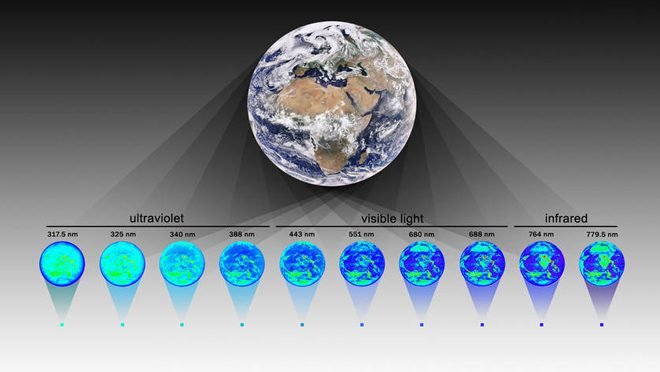Due to the incredible distances of the exoplanets (planets outside the solar system), NASA is using Earth as the laboratory for studying these celestial bodies. Still, each exoplanet looks as little as one pixel, but that’s enough for scientists to observe and understand the chief traits of these farfetched worlds.
It is a new study that uses data from the EPIC (Earth Polychromatic Imaging Camera) instrument of NASA that is being carried by the satellite named DSCOVR (Deep Space Climate Observatory) of NOAA.
 The satellite rotates around the sun at Lagrange point 1 that’s an orbit bringing consistent visibility of the sunlit surface of the earth to EPIC, which is at work since June 2015. Its providence of nuance maps of the earth is majorly helping the progress of studies on climate.
The satellite rotates around the sun at Lagrange point 1 that’s an orbit bringing consistent visibility of the sunlit surface of the earth to EPIC, which is at work since June 2015. Its providence of nuance maps of the earth is majorly helping the progress of studies on climate.
EPIC takes images of the planet in as many as 10 wavelengths, which means that it can provide 10 different images of the earth’s surface every single time it takes a snap. Now, the new study involves the instrument taking images multiple times a day for a specific time period.
Related
The conclusions from the observations included identifying water clouds in the atmosphere and the rotation rate of the planet. In the study issued in the Astrophysical Journal, the authors state that it is possible to derive similar info from the single-pixel observations of the NASA exoplanet.
While rotation rate is the length of the day, the changing patterns in the entire time period will indicate the characteristics of the exoplanets. It can even tell how and when an exoplanet was formed and is presently a difficult property to measure.
However, the study’s authors point out that this procedure’s effectiveness will depend on the respective exoplanets’ unique features. At the same time, planetary features like craters can too contribute in understanding the rotation circle.
Source: NASA